Meskhetian Cuisine: 13 Must-Try Food in Samktshe-Javakheti
The Meskheti region, located within today’s Samtskhe-Javakheti in southern Georgia, is a captivating region that steals everyone’s heart after the visit. Renowned for its stunning landscapes and a harmonious fusion of diverse ethnicities and cultures, it also is a culinary jewel.
Meskhuri, or in English, Meskhetian cuisine, is a true marvel with irresistible flavors that many travelers to Georgia often miss. From the renowned Tenili cheese (my favorite Georgian cheese) to the art of preserving meats and crafting dough-based delicacies, Meskhetian food is an underappreciated heaven for gastronomy lovers.
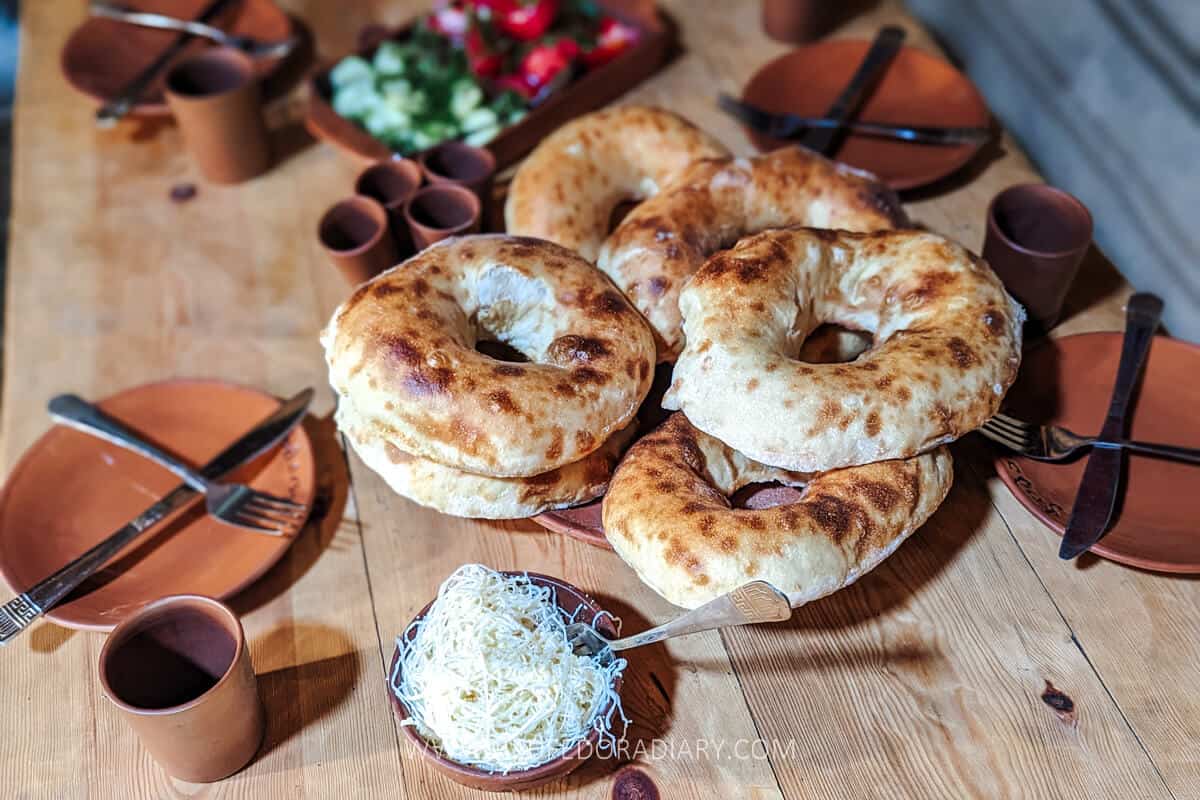
Many establishments across this picturesque region, such as rustic guesthouses, charming restaurants, and even convents and monasteries, promise extraordinary gastronomic adventures.
Whether your journey leads you to the historic Akhaltsikhe (Rabati) Castle, the beautiful city of Akhaltsikhe, the mystical caves of Vardzia, the renowned mineral water resort of Borjomi, or any other hidden corners of historic Samtskhe-Javakheti, savoring some of the staples of Meskhetian cuisine is an absolute must.
In this Meskhetian food post, you’ll find all the essential regional dishes and drinks you should try when planning a trip here. Along with the meals, I also point out at the end of each section where you can try them, either in the region or in Tbilisi.
A brief history of Meskhetian cuisine
With its simple yet lavish offerings, Meskhetian cuisine mirrors the region’s intricate history, ethnographic diversity, and vibrant cultural mosaic.
Unlike the other Georgian regional dishes you can find in the restaurants in Tbilisi, such as spicy and flavorful Megrelian, plant-based Imeretian, or diary and dough-heavy Adjarian, Meskhetian food is hard to find in Tbilisi. Only a handful of cafes offer a few of them, and I will get to it later.
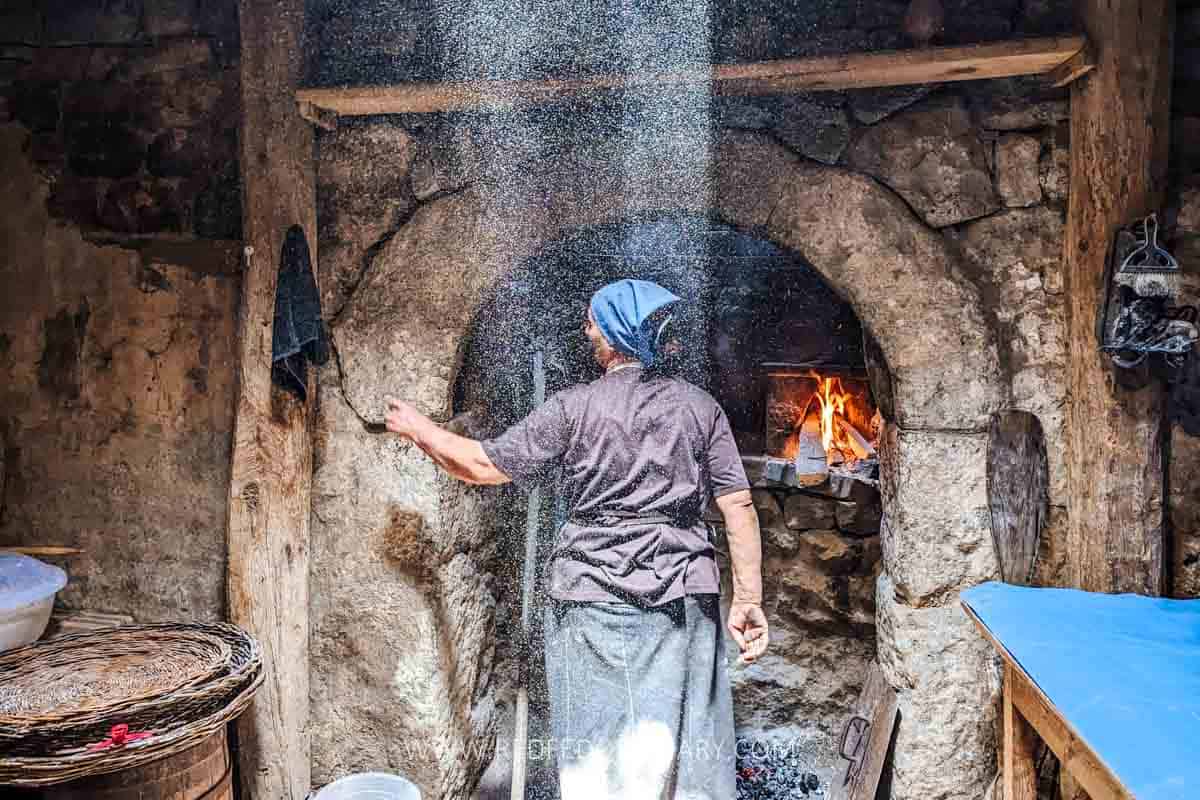
Despite its simplicity, Meskhetian food, crafted from humble ingredients such as wheat flour dough, lard, cheese, and locally foraged greens, reveals a remarkable mix of textures and flavors.
To grasp the essence of Meskhetian cuisine, we need to look into its geographical and historical roots. The Meskhetian Turks, who settled in this territory as early as the 11th century, brought rich Ottoman traditions that would significantly influence the local culinary landscape. Over time, these imported techniques blended harmoniously with indigenous and seasonal ingredients, giving birth to a distinctive and exceptional culinary identity.
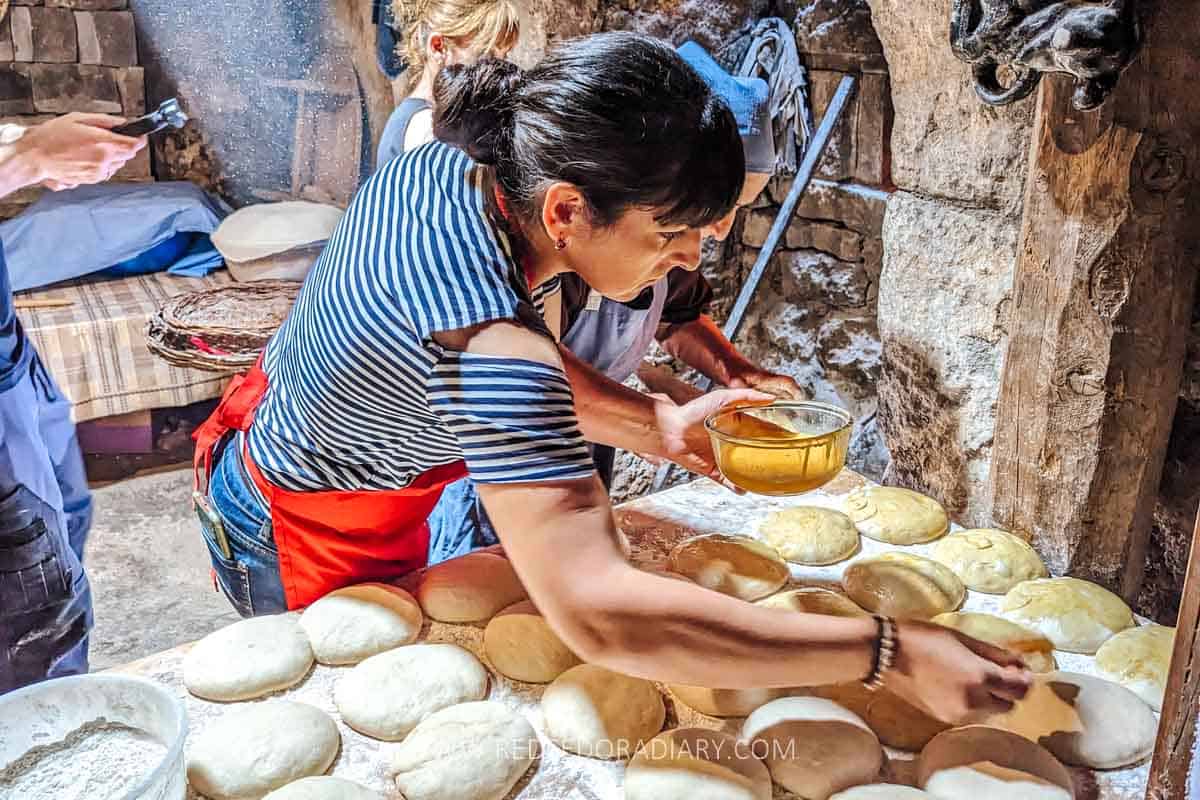
Meskheti’s proximity to the Turkish border also played a significant role, as the area has always been a focal point in the ongoing conflicts between Georgia and the Ottoman Empire.
Consequently, Meskhetian cuisine evolved to prioritize portability and long-term storage. Dehydrated and conserved foods, ingeniously crafted to withstand extended periods of siege and uncertainty, became cornerstones of the Meskhetian meals, reflecting the resilience of its people.
13 Staples of Meskhetian Cuisine
Tenili Cheese
Amidst the culinary treasures of Meskheti, Tenili Cheese, or string cheese, stands as a symbol of its cultural legacy within Georgia’s around 250 other cheese varieties.
Hailing from the Samtskhe-Javakheti and Kvemo Kartli regions, Tenili cheese’s appearance and taste are extraordinary, and its making process is quite interesting to watch.
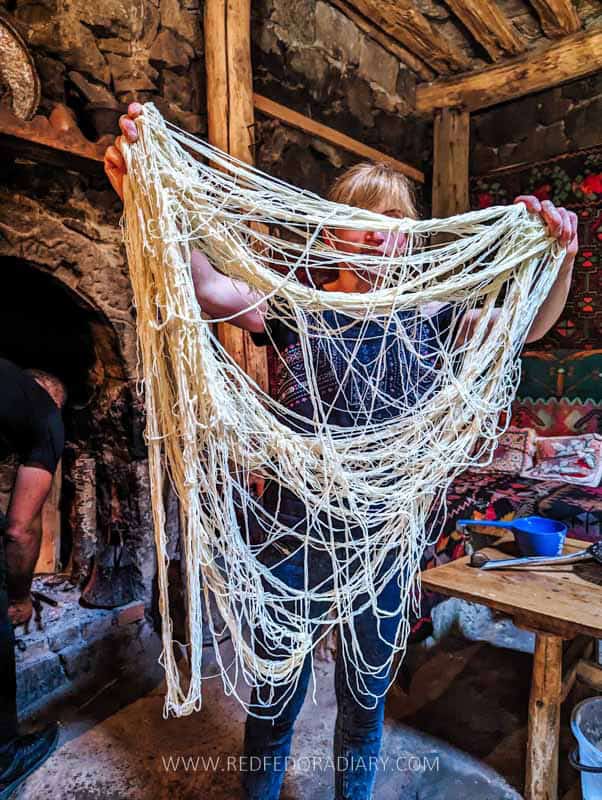
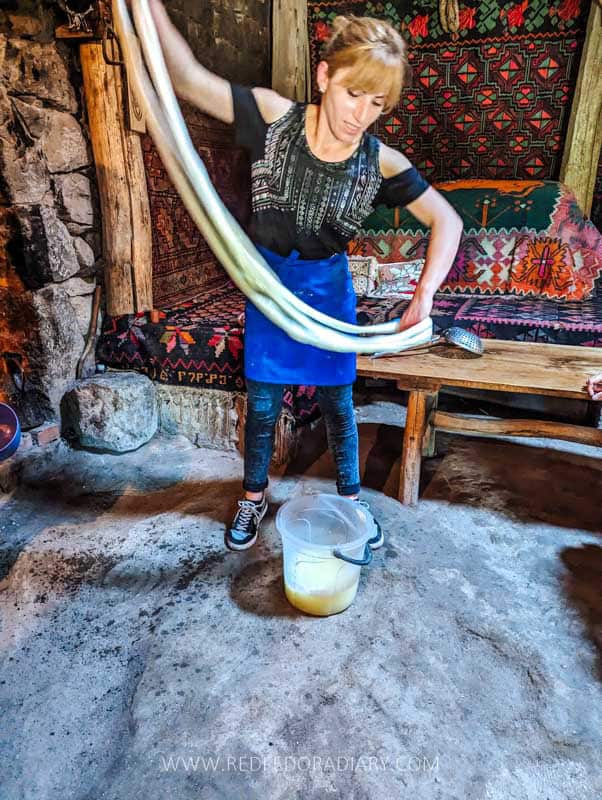
The process starts by boiling cow or sheep milk until curds separate from whey. The resulting curd bunch is carefully transferred to a separate vessel while the whey continues to simmer over the open flame. Then, with some boiling whey to soften the curds, the “stretching” process starts, and whenever needed, the maker adds more boiling whey to the container.
The cheesemaker, mostly a woman, carefully and patiently stretches the softened curds. With each delicate pull, the cheese unfurls, growing thinner and longer until it becomes thread-like strings. The process lasts anywhere from 15 to 20 minutes.
When finished, the cheesemaker soaks the cheese in salted water and hangs it on a wooden stick to dry. This version is called Chechili, or ‘shaggy’ in English, and stored dehydrated.
The Tenili version is placed in a clay jar with a heavy cream for aging. The Georgian word “gatenili” means something forcefully stuffed into a small hole/container with more than it can hold.
When well-preserved, this cheese can languish in storage for months and, in some cases, even years. On my visit to Mekskhetian Oda in Chobareti, where I witnessed the Tenili cheese-making process for the second time, I saw a six-year-old cheese hanging on the wall as part of the ethnographic decoration. I was told that it was easier to transport the cheese in such dried form, and when needed, they would rehydrate it in a bowl of water in a few minutes.

Tenili cheese has a chewy, creamy texture; it is a bit salty and sour. I love eating it as it is, but it perfectly goes with freshly baked bread, ideally Meskhetian, but Shoti/Tone bread will do just fine, too. It also pairs well with fresh, juicy tomatoes.
During Soviet rule, similar to other specialty regional cheeses, the tradition of Tenili-making almost vanished. Only a few families managed to preserve it, and today, Tenili cheese is enlisted as an Intangible Cultural Heritage of Georgia.
You can book a workshop and lunch at Aluda’s Meskhetian Oda if you want to see the making process. Contact them directly on Facebook or ask Samtskhe-Javakheti DMO for help. Galina in Andriatsminda village also hosts workshops for tour groups.
Where to buy: If you want to try Tenili in Tbilisi, some supermarkets and gourmet shops like Cheese House and Georgian Kalata sell it.
Apokhti
Apokhti is a dehydrated cured beef, pork, duck, or goose meat. Its flavor profile and texture resemble traditional jerky or Pastirma/Basturma.
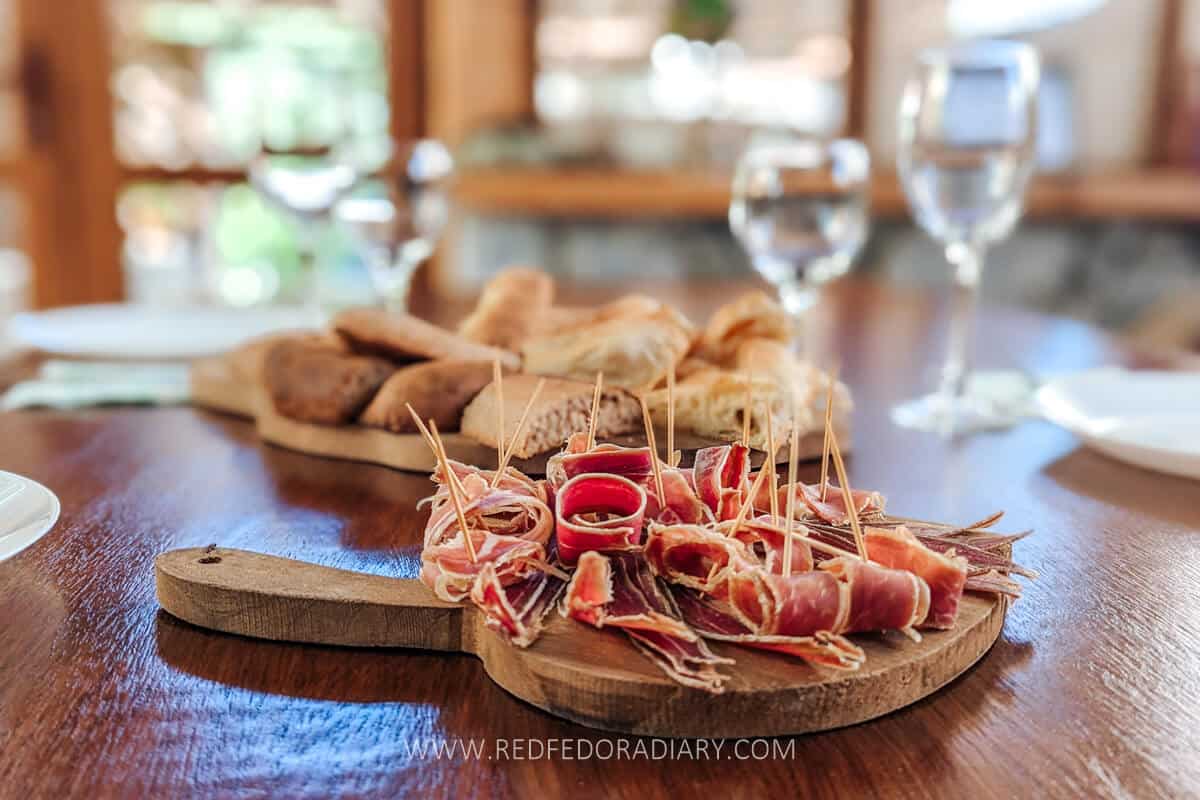
You can eat Apokhti as a snack or include it on the cheese and charcuterie boards when thinly sliced. Meskhetians also use tiny pieces of Apokhti to make their version of Khinkali. More on this below.
Snails
You might not have expected to see snails on this list. But surprisingly, snails, or Lokokina in Georgian, are an integral part of the Meskhetian cuisine.
Meskhetian Lokokina thrives primarily amidst the rugged terrain of Akhaltsikhe, Adigeni, and Aspindza villages.
According to a legend, snails appeared in Meskhetian cuisine after the arrival of French Catholic missionaries in 1230. They are said to have introduced snail preparation techniques to locals, where it took root and flourished.

However, there’s a counterpoint to this tale, according to a historian, Giorgi Beridze, who suggests that snails occupied a revered place within Meskhetian communities even before the missionaries’ arrival, as evidenced in folk literature.
During times of peril and invasion, citizens sought refuge in the rocky mountains of the region. Their culinary options were limited to dried mulberries, tklapi (fruit leather), and snail.
The preparation of Lokokina sticks to tradition – simply boiling it with its shells. Occasionally, they are seasoned with parsley and garlic. The plate of Lokokina is served within their protective shells, accompanied by toothpicks to help you “fish out” the flash from the cover.
Although regarded as a delicacy by many Georgians, in Meskheti, snails are far from a rarity. Instead, they are part of family dinners regularly during the peak season, often cooked multiple times a week.
While the prime season for snails in the Meskheti region typically spans October through March, I tried it during my July visit.
Where to try: You can find Lokokina at Old Bar Akhaltsikhe, Natenadze Wine Restaurant, or Rabati Launge Bar Terrassa in Akhaltsikhe. I have also tried it as part of the lunch at Aphora Beer in Aspindza (more on this venue at the end).
Unfortunately, I haven’t seen traditional Meskhetian snails on the menus in Tbilisi restaurants. However, I’ve heard that Metis, a French restaurant in the Old Town, has snail Khinkali, which I still need to try.
Meskuri Khachapuri
You might already know that all the regions of Georgia have their own version of Khachapuri. Together with known and forgotten recipes, Georgia has up to 47 types of Khachapuri, and Meskhetian is one of them.
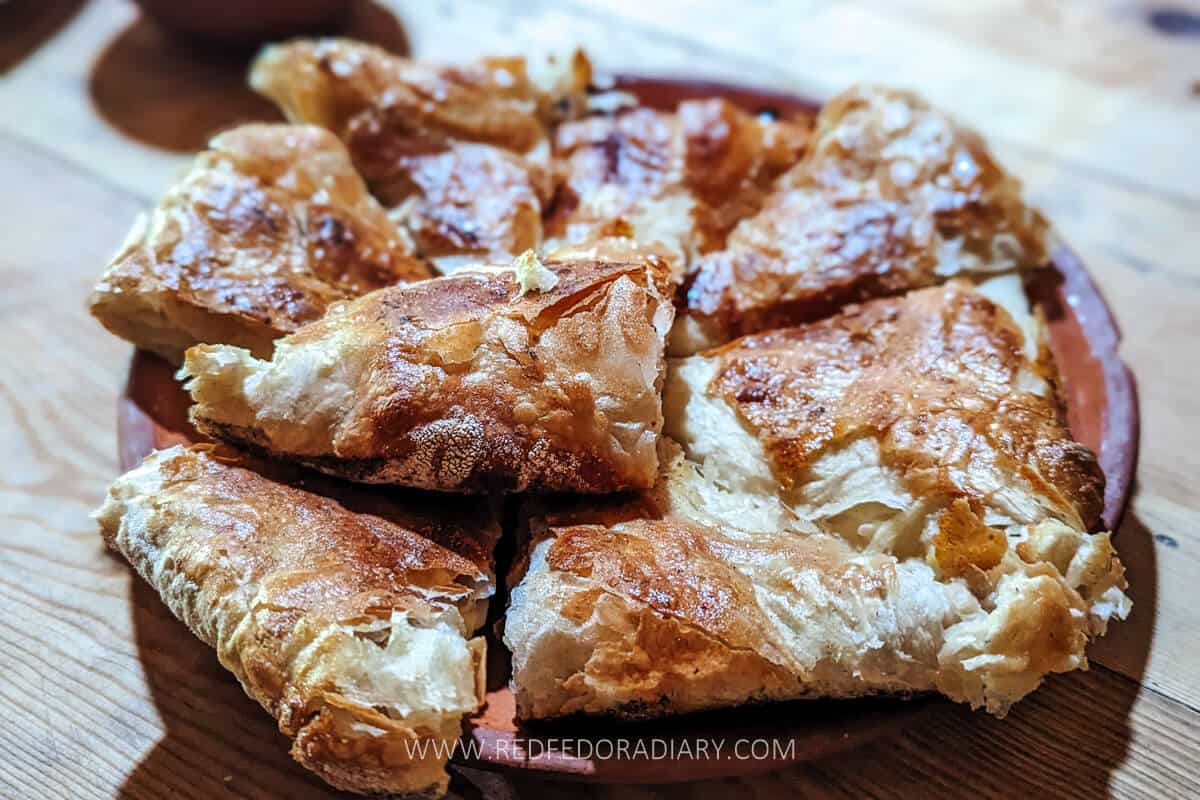
I am not a big Khachapuri fan, but Meskhetian is my absolute favorite. It is made by stretching the dough until it is 1 cm thick. Then it’s laid out on a baking tray and poured melted lard to give it crispiness when baking.
Afterward, they fold it to make a sack shape for the cheese inside. Then, it’s rolled out to have a distinctive square or rectangular form.
The end product has a crisp texture akin to the finest puff pastry, while the Imeretian cheese is tender and chewy. Some restaurants even top it off with the Tenili cheese strings.
Where to try: In Akhaltsikhe, your best bet is Old Bar Akhaltsikhe and a few other cafes. Among Tbilisi restaurants, my favorite one to eat is at Gunda. If you are in Borjomi, head to the village of Kvabiskhevi, 30 minutes away, to Meskhuri Sakhli.
Meskhetian Khinkali
Unlike other regions of Georgia, Meskhetian cuisine is distinguished by having its own regional Khinkali. It is entirely different from the original Khinkali you might know and tried. Instead, they are tiny, have no broth, and are made with dried meat or cheese.

These delicious bite-size Khinkali are made with a basic mixture of flour, salt, and water and filled mainly with Apokhti (particularly the goose) meat. The dried and salt-kissed meat gives the meal a delightful texture and character. Apokhti Khinkali is served with sour cream or crispy fried onions.
Where to try: Various restaurants in Akhaltsikhe have it on the menu, including Old Bar Akhaltsikhe, Rabati Launge Bar Terrassa, and Natenadze Wine Restaurant.
I have eaten a modern version of goose Apokhti Khinkali at Rooms Hotel Kokhta in Bakuriani, near Borjomi. In Tbilisi, Chef Sarajef has Apokhti Khinkali on the menu. If you are in Borjomi, a restaurant, Meskhuri Sakhli, in the nearby village of Kvabiskhevi, also has various styles of Apokhti Khinkali.
Meskhetian Kada
A bread product, Kada is one of Georgia’s sweets/desserts. While there are various types of Kada, Meskhetian cuisine has its kind.
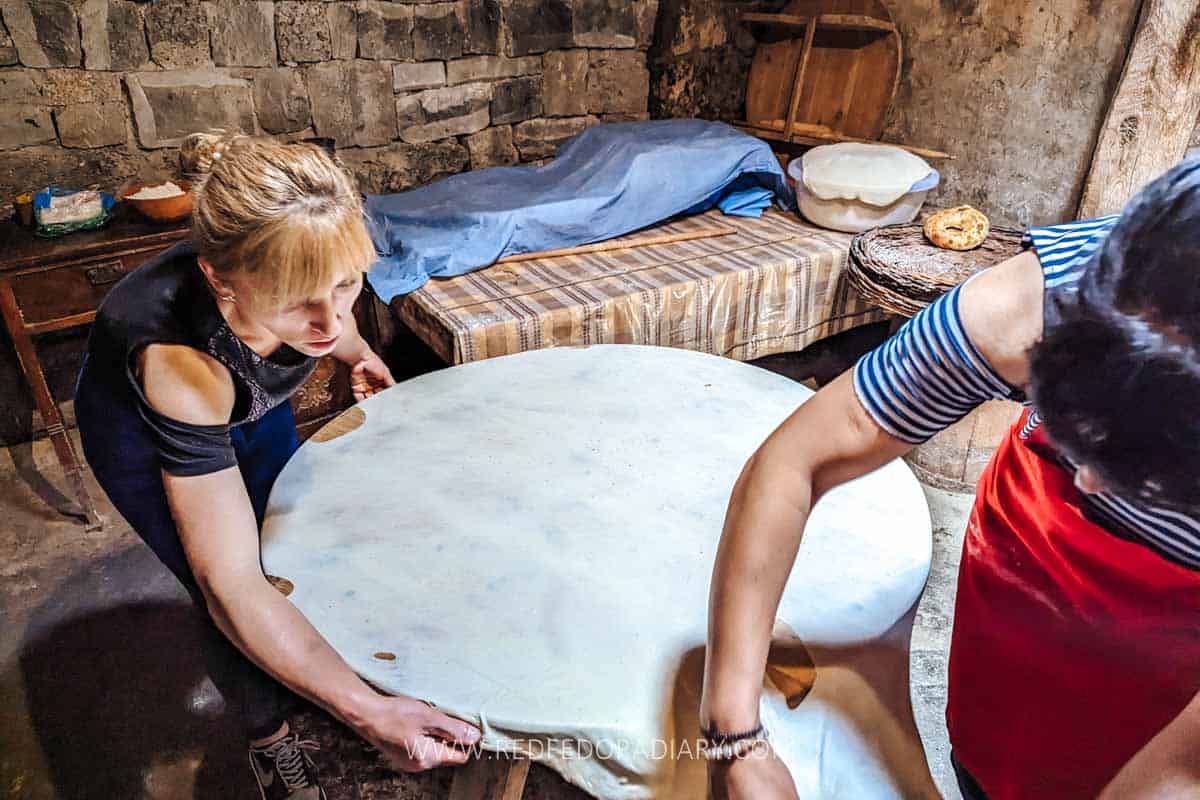
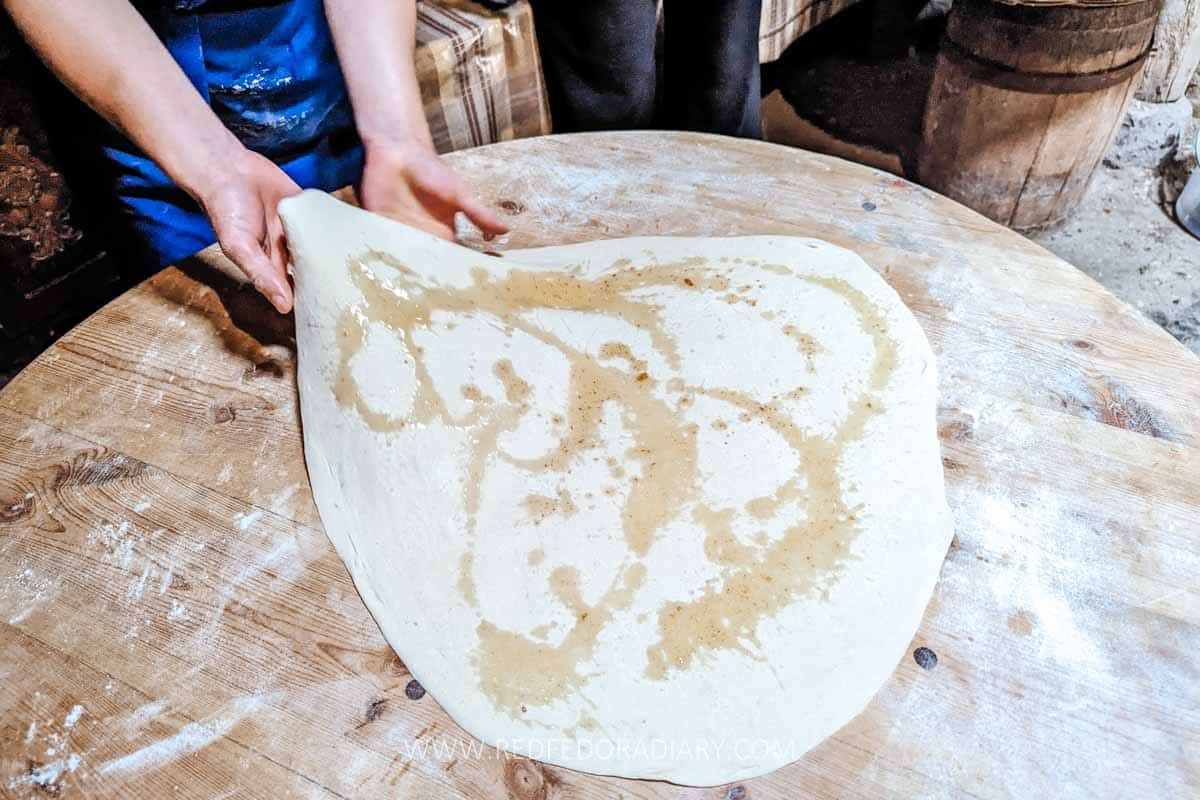
It is made by stretching out the dough as thin as possible and using a tabletop to drape it on. Then it’s folded lengthwise and poured melted lard to give it crispiness when baking. Traditionally, they used pork fat, but nowadays, some bakers and families use vegetable substitutes.
Once a few layers are covered with the fat, they make the shape of a sack to put the filling inside. Then, it’s rolled out to have a distinctive square or rectangular form.

This pie-like dessert uses sugar as its filling. However, I have also tried with a mixture of sugar and grounded walnuts. Similar versions of Kada also exist in Turkey, Armenia, and Azerbaijan.
In some areas of the country, families bake Kada during religious festivities or special events like birthday celebrations or Christmas and New Year.
Where to try: You can find Meskhetian Kada at Gunda restaurant in Tbilisi. In Akhaltsikhe, go to Rabati Launge Bar Terrassa within Akhaltsikhe (Rabati) Castle grounds. Meskhuri Sakhli in the village of Kvabiskhevi outside of Borjomi also serves Meskhetian Kada, among other regional baked goods.
Tatarberaki
Tatarberaki is a Meskhetian version of pasta. Often called Tatarboraki or Tatarberagi, this Georgian food is simple yet incredibly delicious.

Made either freshly knitted dough (flour, water, salt) rested for 30 minutes or dried one, then cut into square or rhombus-shaped pieces and cooked in salted water to al dente. Like pasta, the flavors and textures come with various toppings – traditionally, with garlic and onion sauteed in butter served with Matsoni (sour Georgian yogurt) mixed with fresh garlic.
Where to try: Old Bar Akhaltsikhe and Rabati Launge Bar Terrassa both have Tatarberaki on the menu in Akhaltsikhe. Elene Dariani restaurant in Tbilisi also has it on the menu with a twist of Racha ham or plant-based toppings.
Erishta
Erishta is another pasta-like dish in Meskhetian cuisine I first encountered in the summer of 2023 at Meskhetian Oda in Chobareti.
Unlike Tatarberaki, Erishta resembles thicker spaghetti or noodles and has a crispier texture. It also has a darker color and has a unique technique of preparation.
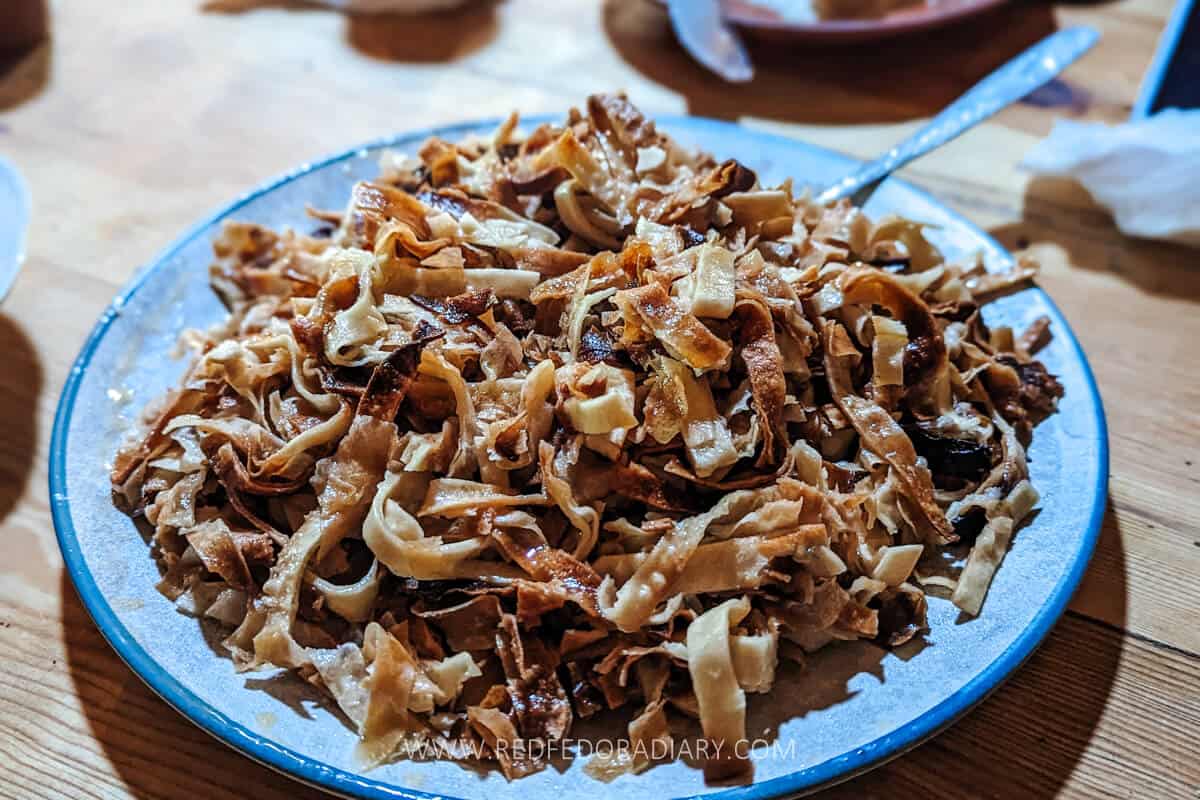
They knit the dough, cut it into stripes, and then slightly bake it in the traditional stone oven to dry. Then, they rehydrate it when needed by soaking it in the water. That’s why Erishta has an extended shelf life similar to other staples of Meskhetian cuisine.
Before serving, melted Erbo (a ghee-like Georgian butter) is poured over the cooked Erishta.
Where to try: Unfortunately, I haven’t seen Erishta on the menu in restaurants across Georgia. The only place I have tried thus far is the Meskhetian Oda in Chobareti, as mentioned above.
Meskhuri Puri
Grains have always been essential to Meskhetian cuisine, bringing varied Puri, or bread, to the table. Doli wheat is one of the endemic to the region, and the bread made from it is called Dolis Puri, followed by Dika wheat.
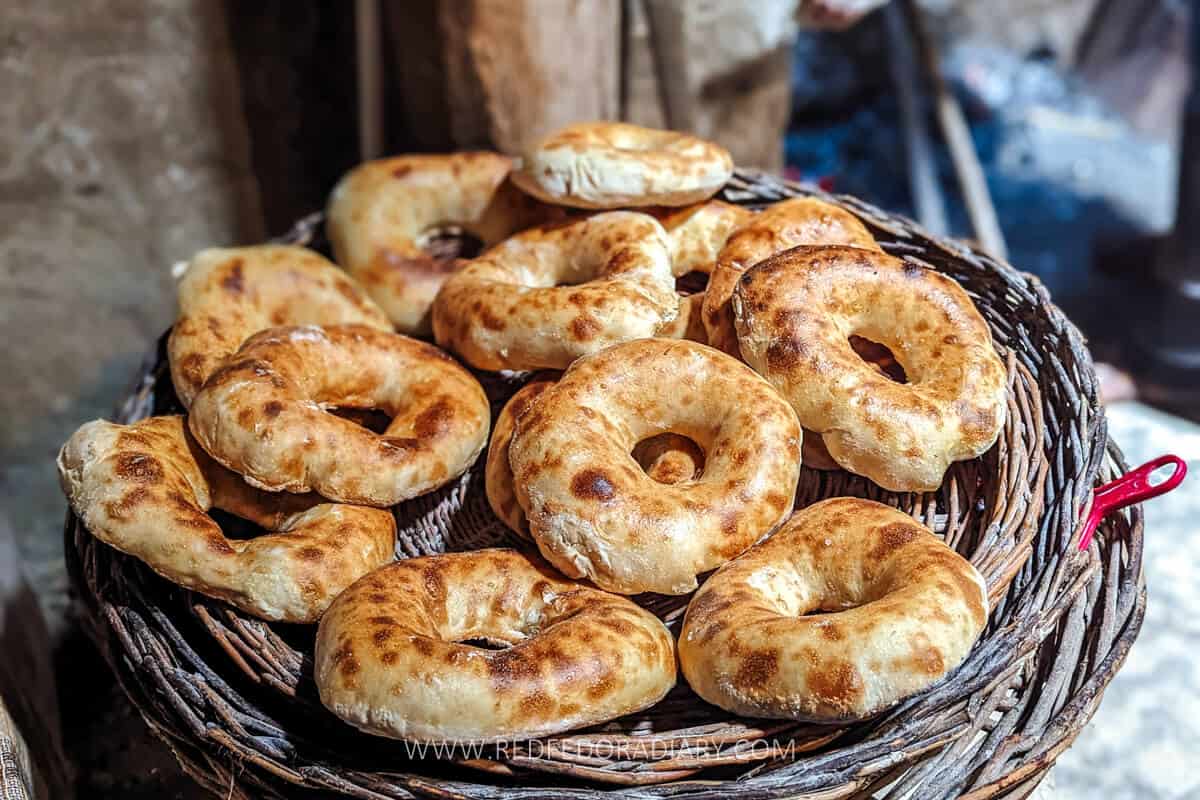
There are several varieties of Meskhetian bread, such as lavash, shoti, kokora, (donut-shaped), long lavash, and somin (round bread).
My favorites are kokora for its softness and Doli for a stiff texture that’s also great as a sandwich or toasted bread.
Where to try: Meskhuri Sakhli in Kvabiskhevi near Borjomi bakes various Meskhetian breads. I have tried kokora at Meskhetian Oda in Chobareti. In Tbilisi, Natela’s Bread has Doli and other breads made from Georgian endemic grains.
Bakmazi
If you’ve been to Turkey, you might be familiar with Pekmez, a molasses-like syrup made from mulberry that’s also an integral part of Turkish breakfast.
It is no surprise to see the same syrup rooted in Meskhetian cuisine, made from either white or black mulberries. It can be enjoyed at breakfast or as a substitute for honey on a cheeseboard, something I first saw and loved the idea at Meskhetian wine tasting (more on this below).
Tklapi
Tklapi is a Georgian name of a fruit leather and one of my favorite snacks I grew up with. I especially love sour ones made from red tkemali we make the Tkemali sauce from.
Here, instead of tkemali, they make it from white mulberry, which results in light brown color. I was also astonished at how they dry it.
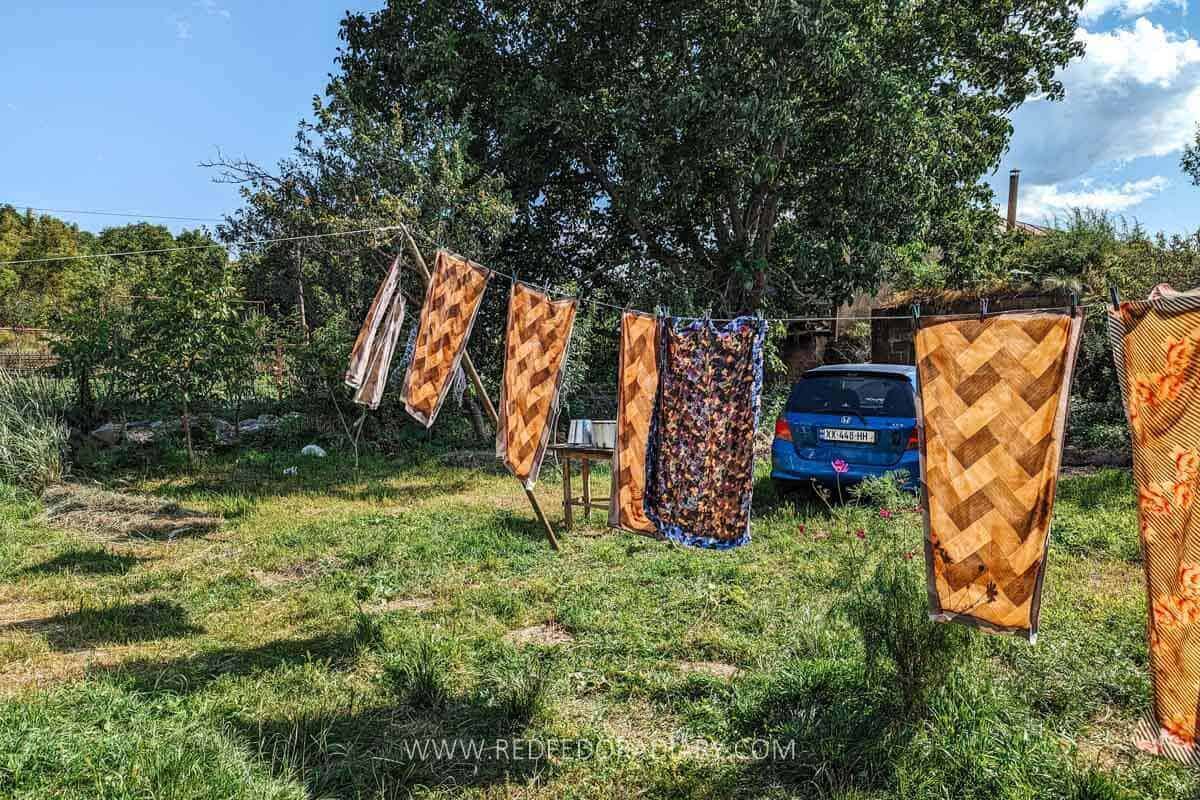
My grandmother usually spread the fruit paste on a wooden cutting board she had specifically for Tkpali. After reaching the thickness she wanted, she’d cover it with a cheesecloth to prevent flys and insects and put it somewhere in the balcony/garden under direct sunlight.
In Meskheti, they spread it on a piece of fabric and hang it on a drying rack as a laundry. Quite fascinating!
Meskhetian wine
When we talk about Georgian wine, Meskheti doesn’t come to mind at first, although it has played an important role in Georgian viniculture. Many scholars even believe that some of Georgia’s prime grapes have migrated to other areas from Meskheti.
Unfortunately, many indigenous Mekshetian vines have vanished due to the Ottoman rule of the region. And while Samtskhe-Javakheti was a center in the history of winemaking in Georgia, it is now reviving its long-lost traditions.
Unlike other parts of the country, vineyards here are laid out on terraces at altitudes reaching 1,700 meters above sea level.
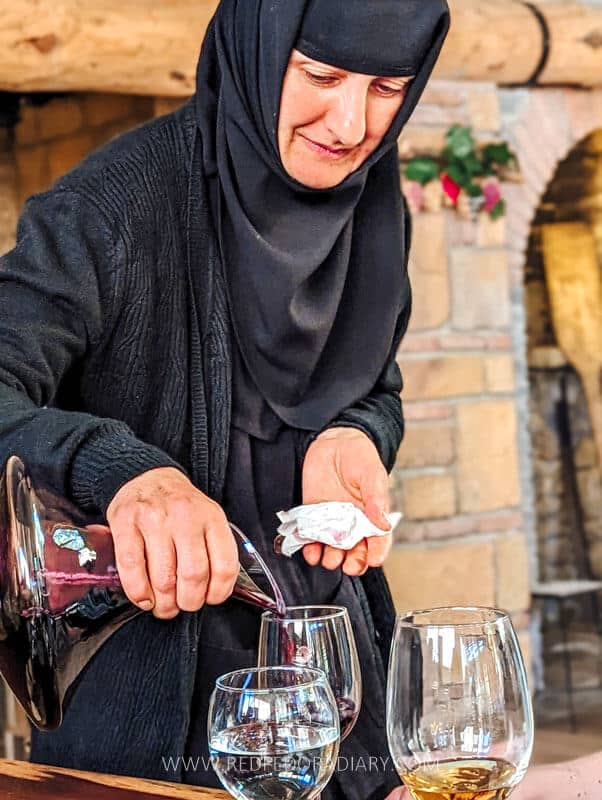
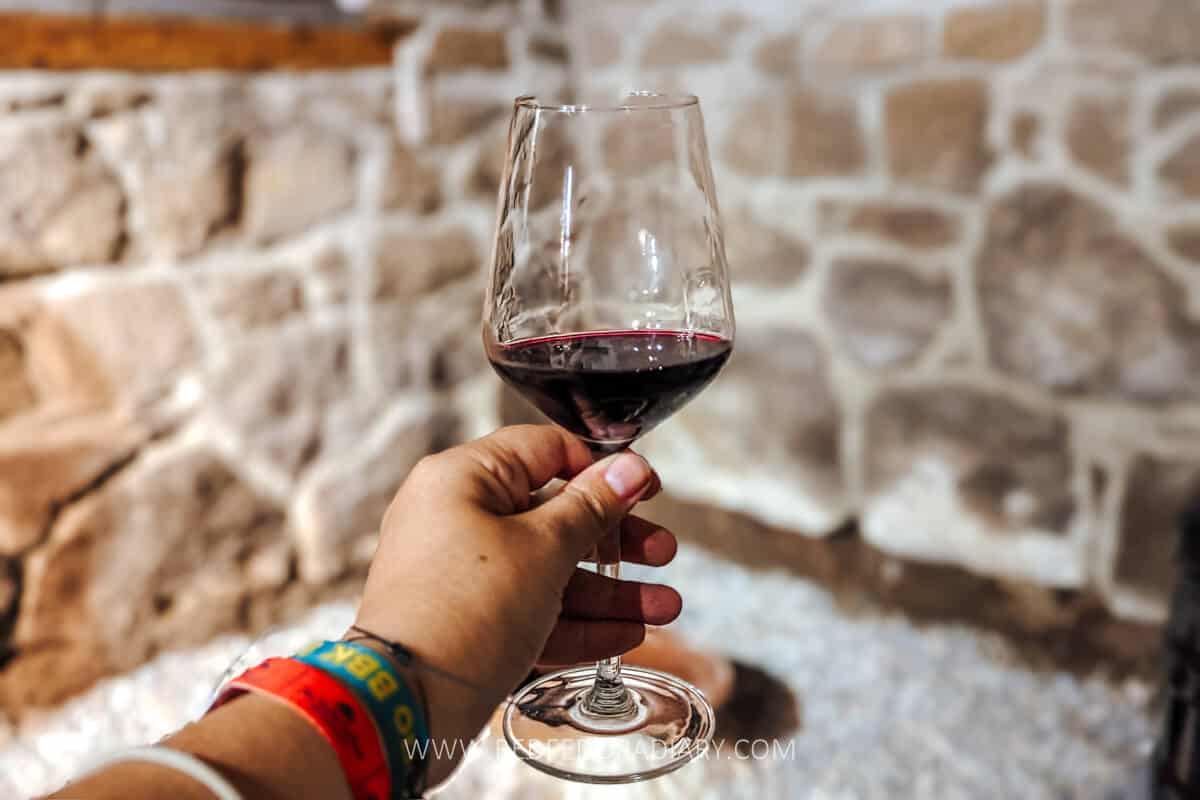
A local winemaker, Giorgi Natenadze, managed to save 24 Meskhetian vines over the years and makes 11 wines from these local grapes in his winery – Natenadze Wine Cellar – in Akhaltsikhe.
Davit Mumladze’s winery in Atskuri makes Meskhuri Mtsvane together with Kisi, Saperavi, Chinebuli, Muskati, and others.
Another great place to try Meskhetian wine is at Ude Monastery, where resident nuns craft their wines. Yes, you can actually book a wine tasting or lunch at the monastery!
The most common Meskhetian wines today are Meskhuri Mtsvane, Chitistvala, Tamaris Vazi, and Chitiskvertskha.
Meskhetian Mtsvane is a dry white made using a full skin-contact method, while Tamaris Vazi is a mild red wine.
Where to try: apart from the wineries and enterprises mentioned above, you can find Meskhetian wines at various wine bars and shops in Tbilisi, including 8000 Vintages and Wine Exchange.
Qvevri Beer
Even though beer is not a traditional Meskhetian beverage, I decided to include it for several reasons.
Amphora Beer is an innovative approach using qvevri to make a Belgian and German-style lager beer from local Meskhetian wild hops and local wheat.

Zaza Zedgenidze’s venue, Amphora Beer, encompassing a brewery, restaurant, guesthouse (book a room here), and beer spa in Aspindza, offers a delicious gastronomic journey everyone should have a chance to experience.
Where to try: Several bars in Tbilisi, including Abragi near Freedom Square, sell bottled Amphora Beer.
My Favorite Travel Resources
To ease your travel planning, check out all the posts about Georgia travel. Additionally, here are some of the websites and services I use when preparing for my next adventure anywhere in the world.
✈ Book affordable flights on WayAway, a platform that shows the best flight deals, tours, and hotels. With a WayAway Plus membership, you can earn cashback. Get 10% off with code: RFD10
🚫 Get compensation for up to 700$ with Airhelp if your flight was canceled or delayed within the last 3 years.
🚗 Rent a car at Local Rent for affordable prices and convenient service.
❣ Pre-book a private car transfer with GoTrip from Tbilisi Airport to your hotel or any other city across Georgia.
💻 Get a VPN from Surfshark to protect your devices from hackers when using public Wi-Fi when traveling.
📱 Install the Airalo app, which provides local eSIMs for a more affordable internet connection when traveling. Get 3 USD with code: BAIA2592.
💸 Use Wise to withdraw money in local currency without hidden fees and avoid high exchange rates. On top, you might get a Visa or Mastercard debit card.
🍷 For some of the best, expat-designed wine tours check out Eat!ThisTours. Get a 5% discount with code RFD5.
🏨 Find budget-friendly deals on all sorts of accommodation types on Booking.com.
🩺 Buy the most flexible and budget-friendly travel insurance, SafetyWing, covering COVID.
☀ Book in advance some of the best city walks, cultural experiences, and day tours to maximize your stay and experience here.
